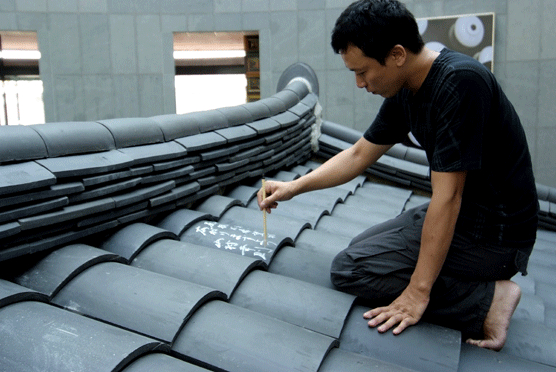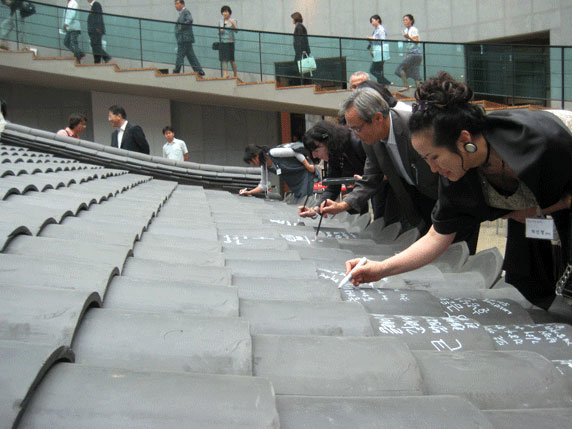Korea and Japan share a path that was traveled on by their forefathers since the ancient times. Fortunately, I had an opportunity to travel to and fro by ship, which made me acknowledge the transoceanic linkage between the two countries. This is where everything started.
I saw roof tiles on a temple in Gyeongju, the ancient capital that lasted for a thousand years. Those tiles looked like stormy waves of the history which repeats itself. I felt that traditional tiles and roofs are two important elements that connect the two cultures.
A roof completes the covering of a house, standing above our heads and representing the overall style of the house. Traditional roofs with tiles were decisive elements that completed houses. First of all they protected houses from rain and bad weather. Whilst roofs have significant value in the styles of houses, in modern architecture the style gradually changed. New synthetic materials and building methods were developed, to replace traditional ones. Whilst we are reminded of economic miracles by modern buildings and skyscrapers, at the same time we feel intimidated. As modern cityscape is always going through transformation, we should ask ourselves what is going to disappear and what we should prevent from disappearing.
At the Gyeongju temple, I saw people writing down their wishes on roof tiles. Writing down their wishes on tiles, and making a roof with the tiles with wishes written down on, gave me an amazing inspiration. Like the roof tiles at the Gyeongju temple, I hope my art object will be the place on which people write down their wishes. I want people have a closer connection with roofs. I want these art objects to connect people.
My stay in Korea was a unique experience of precious moments that nothing can replace. For example, Korean style of eating dinner was quite impressive to me.Many kinds of food a presented on small plates. And everybody share the dishes together.
To me this looked like a remarkable tradition. Koreans seem to know true joy of really sharing things, from food to life, performance space, time, and ideas. I really enjoyed such pleasant experiences during the open-studio program at Gimhae Clayarch Museum.
A view of rice fields around the Museum was familiar to me: it reminded me of the country sides of Japan. I've learned that green rice plants turn gold in the fall; these ripe grains make the plants bend forward, creating a beautiful view of gold rice fields. This summer, I was inspired a lot by my experiences in Gimhae, which led to expressions and art works. I would like to extend my deepest gratitude to everybody who contributed to my great experience, especially artists, assistants, staff of the Museum, and all the good people I met here.
Text by Yukinori Yamamura.
Also take a look at "Hand". This video is Yamamura san's contribution to the Amsterdam Biennale

